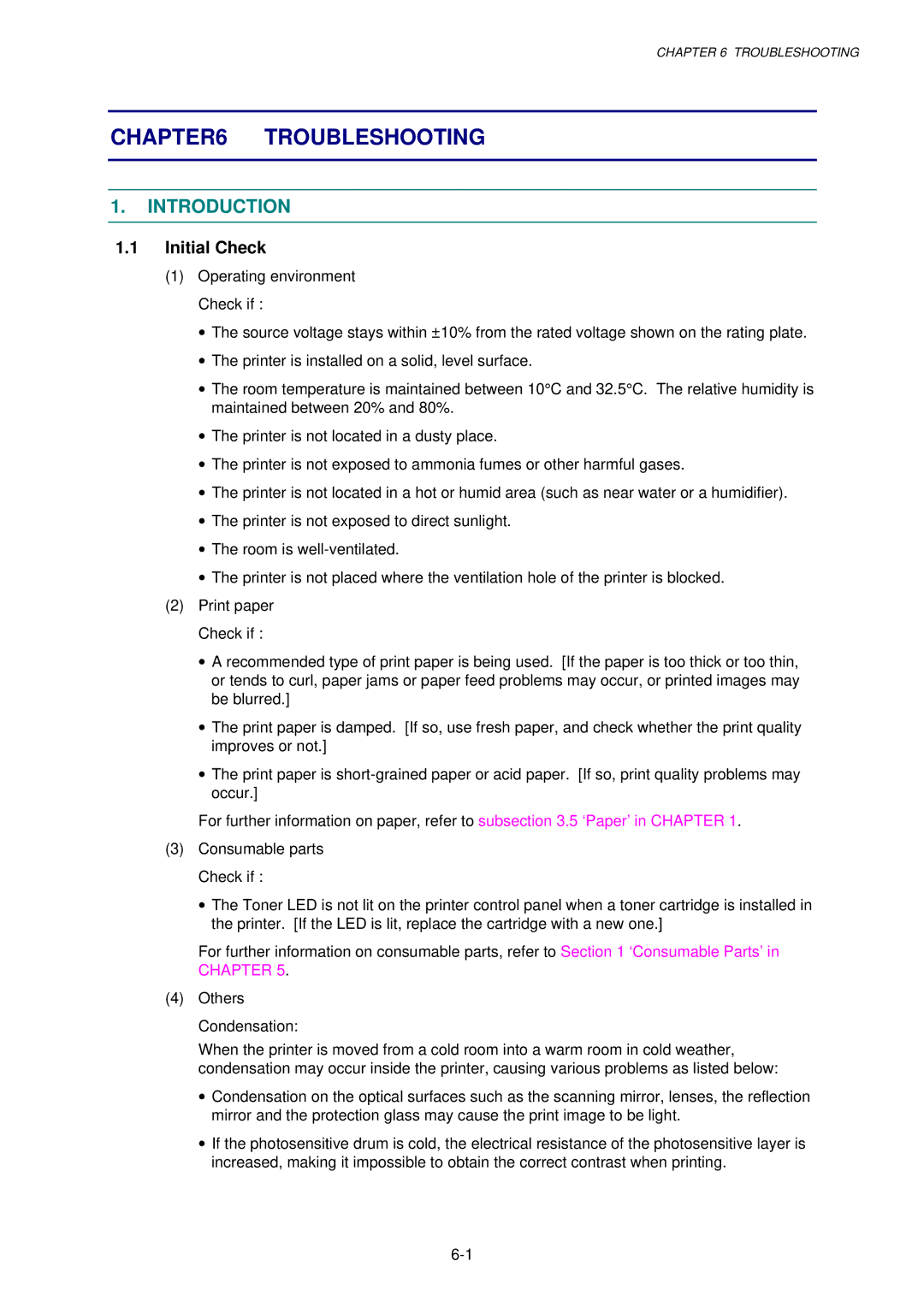
CHAPTER 6 TROUBLESHOOTING
CHAPTER6 TROUBLESHOOTING
1.INTRODUCTION
1.1Initial Check
(1)Operating environment Check if :
•The source voltage stays within ±10% from the rated voltage shown on the rating plate.
•The printer is installed on a solid, level surface.
•The room temperature is maintained between 10°C and 32.5°C. The relative humidity is maintained between 20% and 80%.
•The printer is not located in a dusty place.
•The printer is not exposed to ammonia fumes or other harmful gases.
•The printer is not located in a hot or humid area (such as near water or a humidifier).
•The printer is not exposed to direct sunlight.
•The room is
•The printer is not placed where the ventilation hole of the printer is blocked.
(2)Print paper Check if :
•A recommended type of print paper is being used. [If the paper is too thick or too thin, or tends to curl, paper jams or paper feed problems may occur, or printed images may be blurred.]
•The print paper is damped. [If so, use fresh paper, and check whether the print quality improves or not.]
•The print paper is
For further information on paper, refer to subsection 3.5 ‘Paper’ in CHAPTER 1.
(3)Consumable parts Check if :
•The Toner LED is not lit on the printer control panel when a toner cartridge is installed in the printer. [If the LED is lit, replace the cartridge with a new one.]
For further information on consumable parts, refer to Section 1 ‘Consumable Parts’ in CHAPTER 5.
(4)Others Condensation:
When the printer is moved from a cold room into a warm room in cold weather, condensation may occur inside the printer, causing various problems as listed below:
•Condensation on the optical surfaces such as the scanning mirror, lenses, the reflection mirror and the protection glass may cause the print image to be light.
•If the photosensitive drum is cold, the electrical resistance of the photosensitive layer is increased, making it impossible to obtain the correct contrast when printing.
